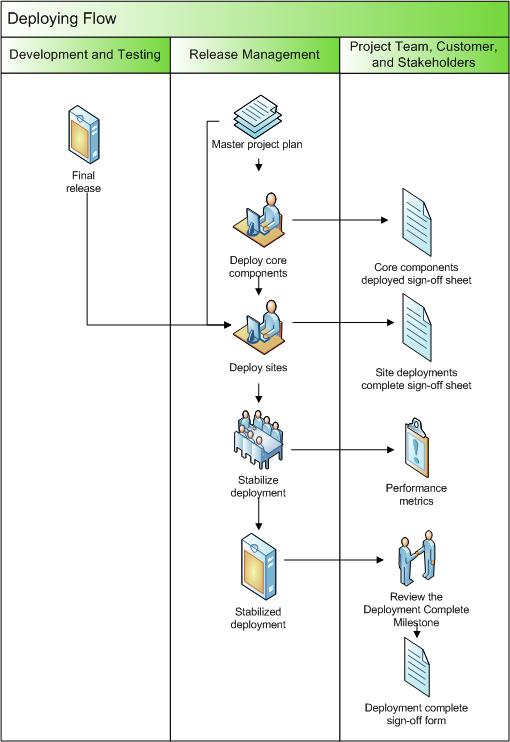CSC/ECE 517 Fall 2013/ch1 1w09 hs: Difference between revisions
Jump to navigation
Jump to search
No edit summary |
No edit summary |
||
| Line 9: | Line 9: | ||
Deployment is a process of transferring your application onto a production server to make it available for other users. This process involves various activities and transitions between them. Though the general procedure remains same, the specific requirements vary with the software system. | Deployment is a process of transferring your application onto a production server to make it available for other users. This process involves various activities and transitions between them. Though the general procedure remains same, the specific requirements vary with the software system. | ||
[[Deployment Process.jpg|thumb|center|800px|Deployment Process]] | [[File:Deployment Process.jpg|thumb|center|800px|Deployment Process]] | ||
= Why Automation? = | = Why Automation? = | ||
Revision as of 19:22, 16 September 2013
Code Deployment and Release Management with Rails
Code Deployment or Software Deployment and Release management with Ruby on Rails uses various tools such as Capistrano, Heroku, Mina, Vlad, Inploy etc. These automated tools are frameworks used to write and execute commands in parallel remote machines and thus ease the process of deployment and management of various applications.
Introduction
Deployment is a process of transferring your application onto a production server to make it available for other users. This process involves various activities and transitions between them. Though the general procedure remains same, the specific requirements vary with the software system.

Why Automation?
Deployment Automation tools
Capistrano
Heroku
Vlad
Comparison between Capistrano/Heroku/Vlad
Conclusion
References
technet.microsoft.com
<references/>